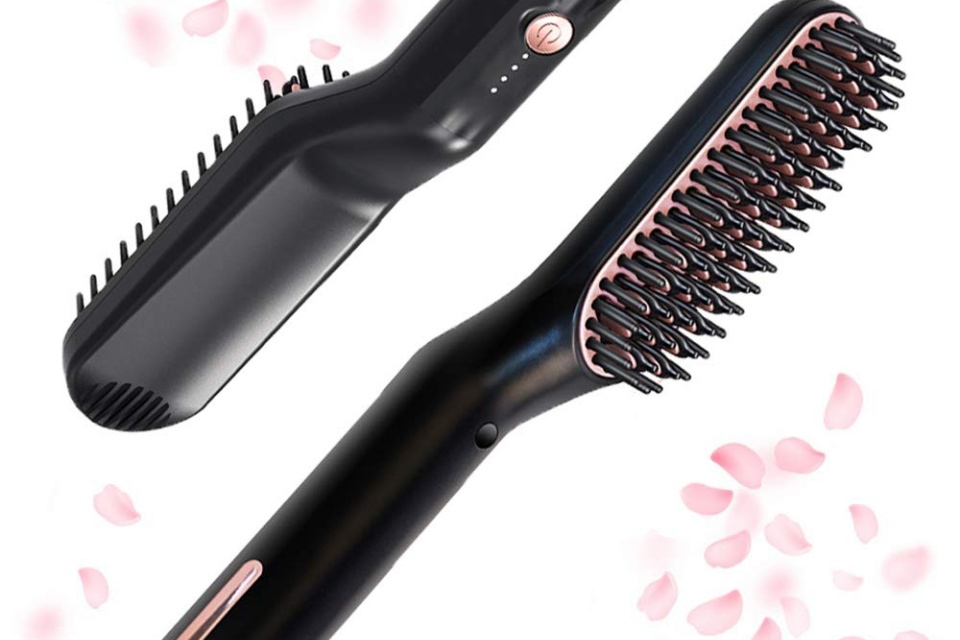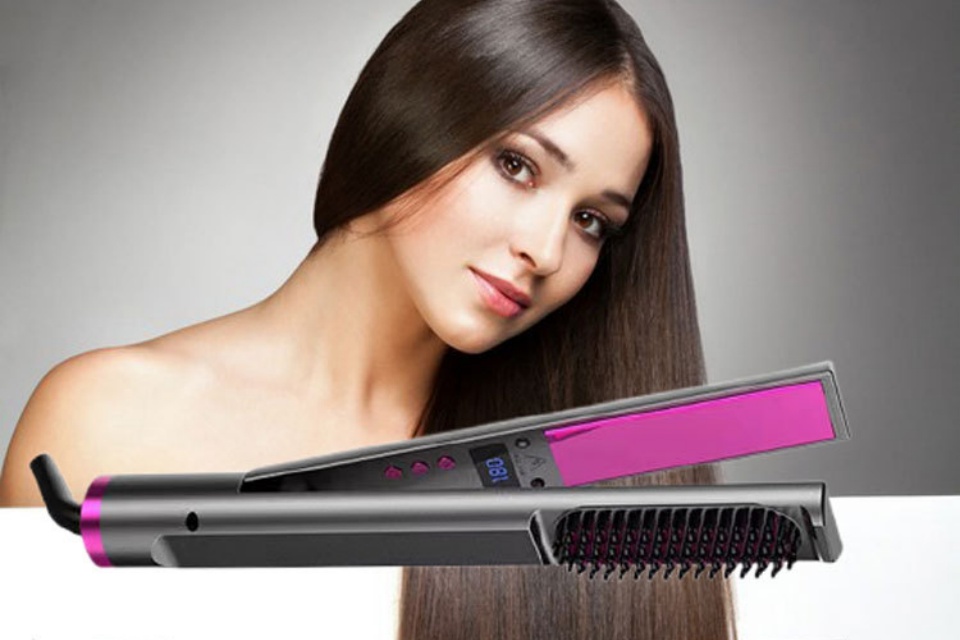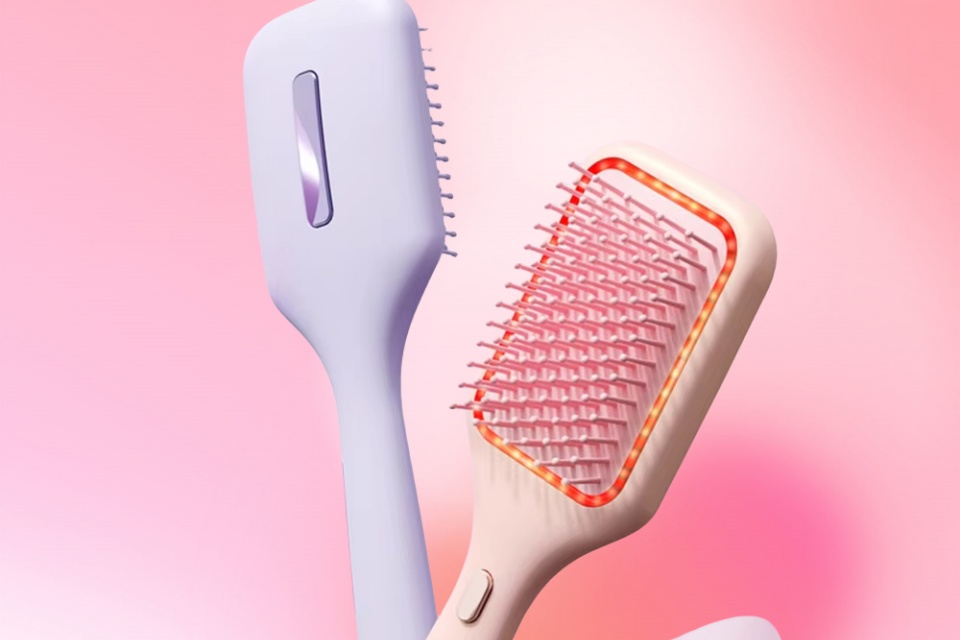Night time hair care-combing before bed tips
Summary
Nighttime hair care, particularly the practice of combing hair before bed, has gained attention for its potential benefits in maintaining hair health and appearance. This routine is notable for its ability to help prevent tangles, reduce breakage, and promote overall scalp health, making it an integral part of many individuals' personal grooming rituals. While some hair care experts argue that morning combing may enhance scalp blood circulation, incorporating a nighttime combing routine can offer unique advantages that contribute to both relaxation and hair management.
One significant benefit of nighttime combing is its calming effect, which can aid in stress relief and prepare individuals for restful sleep. By integrating this practice into their evening routines, people may find it easier to unwind after a long day. Additionally, combing before bed helps to minimize the formation of tangles and knots that typically occur overnight, particularly for those with long or curly hair. This practice reduces the risk of hair breakage, a common concern that arises from the friction and movement of hair during sleep.
Furthermore, nighttime combing can enhance scalp health by promoting circulation and allowing for the even distribution of hair treatments like serums and oils. This process supports hair nourishment and recovery during sleep, maximizing the reparative benefits of such products. However, it is essential to approach nighttime combing with care, as excessive or aggressive brushing can lead to damage, emphasizing the need for gentle techniques and appropriate tools.
Incorporating combing into a nighttime hair care routine also reflects broader cultural practices and beliefs about hair maintenance, which vary across different societies. These rituals not only serve functional purposes but also embody notions of beauty and identity, underscoring the significance of hair care in various cultural contexts. Overall, establishing a consistent nighttime hair care routine that includes gentle combing can set the foundation for healthier, more resilient hair.
Benefits of Combing Hair at Night
Combing hair at night can offer several benefits that contribute to both the health and aesthetics of hair. While some experts suggest that combing is better suited for the morning to improve scalp blood circulation, there are specific advantages to including this practice in a nighttime routine.
Relaxation and Stress Relief
One of the primary benefits of combing hair at night is the relaxation it provides. Engaging in a calming ritual, such as taking a few minutes to comb through your hair, can help individuals unwind from the day's stresses and prepare for sleep. This calming effect can enhance overall well-being and promote a peaceful night's rest.
Prevention of Tangles and Breakage
Combing hair before bed can help manage tangles that commonly develop overnight, especially for those with longer or curly hair. When hair is left loose during sleep, movement can lead to knots that are difficult to detangle in the morning. By combing before bed, individuals can reduce the risk of hair breakage caused by pulling at tangled strands. Techniques such as using a detangler or a leave-in conditioner prior to combing can further ease this process.
Maintenance of Scalp Health
Combing can also stimulate the scalp and promote circulation, which is beneficial for hair growth. By gently brushing the scalp, individuals encourage blood flow, which nourishes hair follicles and supports the health of the hair. Regular scalp massages during combing can enhance this effect, helping to maintain a healthy scalp environment that is conducive to hair growth.
Management of Static Electricity
Combing before bed can help remove static electricity from the hair, which is especially beneficial in dry environments. However, it is important to note that excessive combing may lead to damage. Therefore, a gentle approach with small brush strokes is recommended to minimize stress on the hair.
Enhancing Overnight Hair Treatments
For those who incorporate hair serums and oils into their nighttime routine, combing can help evenly distribute these products throughout the hair. This ensures that hair receives optimal hydration and treatment while sleeping, making the most of the reparative benefits of these products during the natural overnight recovery phase.
Types of Combs and Brushes
When it comes to hair care, selecting the right combs and brushes is essential for maintaining healthy hair and preventing damage. Various types of brushes and combs serve different purposes and cater to different hair types, making it important to choose wisely.
Boar Bristle Brush
The boar bristle brush is highly regarded for its ability to promote hair health by gently detangling knots while distributing natural oils throughout the hair. This results in a sleeker appearance and added shine. Experts recommend using a quality brand such as Mason Pearson, known for its durability and effectiveness, despite its higher price point.
Styling Brushes
For those who regularly style their hair, specific brushes are tailored to different styling needs. For instance, a Denman brush is ideal for straight styles, while a paddle brush is useful for wrap drying and blowouts. Round brushes can be employed to create volume, waves, and curls. The Denman Medium 7 Row Stylish Brush and the R Session Tools 2” Boar Bristle Round Ceramic Brush are popular choices among professionals for their performance in styling.
Wide-Tooth Comb
A wide-tooth comb is an essential tool for detangling, especially for wet or conditioned hair. The wider spaces between the teeth minimize pulling and damage to the strands, making it gentler on the hair. It is recommended to use a wide-tooth comb in the shower or after rinsing to avoid breakage. Brands such as Pureglo offer anti-static options that are well-suited for this purpose.
Paddle Brush
Paddle brushes are versatile and effective for both dry and wet hair. They are particularly beneficial for long, thick, or straight hair as they help reduce frizz and detangle without excessive force. The lightweight design and wider surface area make them a favorite among many users.
Proper Brushing Techniques
Using the right brush or comb is only part of the equation; proper brushing techniques are also crucial. Experts recommend starting from the ends of the hair and working upwards to prevent tugging. For the best results, it is advisable to brush the hair twice a day and use a leave-in conditioner or detangling spray to create slip and facilitate smoother brushing. Moreover, cleaning brushes regularly and ensuring they are disinfected can help maintain hair and scalp health.
By understanding the various types of combs and brushes available, individuals can make informed choices that support their specific hair care needs and contribute to healthier, shinier hair.
Techniques for Night Time Combing
Nighttime hair care is essential for maintaining healthy hair, and proper combing techniques play a significant role in this routine. Following effective combing practices can help minimize damage, reduce tangles, and promote overall hair health.
Best Practices for Combing
To ensure that your hair remains healthy while you sleep, start by gently detangling your hair with a wide-tooth comb. It is advisable to work from the ends of the hair and gradually move up towards the roots, as this method helps avoid tugging and snapping strands. Begin by sectioning your hair into manageable parts, which can make the detangling process easier and more organized.
When combing, always hold each section gently to reduce strain on the scalp. If you encounter stubborn knots, use your fingers to loosen them before reaching for the comb. Additionally, applying a leave-in conditioner or detangling spray can create slip, making it easier to comb through your hair.
Timing and Frequency
Combing is most beneficial when done at night, but it's best to do it after ensuring that your hair is completely dry. Combing wet hair is discouraged as it is more prone to breakage due to increased elasticity. Ideally, create a routine where you lightly finger-detangle your hair before bed, allowing for a gentle and less damaging approach.
Tools for Combing
The choice of tools is crucial in preventing hair damage. A wide-tooth comb is recommended for detangling, as it minimizes the risk of breakage and works well on damp hair. Avoid using tight elastics or hair ties, as these can pull on the hair and cause stress to the follicles. Instead, consider using soft satin scrunchies or spiral ties that hold hair securely without slipping out of place.
Additional Considerations
Maintaining a nighttime hair care routine not only involves proper combing but also includes moisturizing treatments. Applying a lightweight hair serum before bed can help manage frizz and protect against breakage caused by friction from pillowcases. Moreover, incorporating deep conditioning treatments into your routine can provide your hair with the hydration it needs to stay strong and flexible overnight.
By adopting these techniques and being mindful of your nighttime habits, you can significantly improve your hair's health and reduce the risk of damage while you sleep.
Common Mistakes to Avoid
When it comes to nighttime hair care, particularly combing and detangling, there are several common mistakes that many individuals make, which can lead to hair damage and hinder healthy hair growth. Awareness of these mistakes can help enhance the effectiveness of your hair care routine.
Over-Washing or Under-Washing Hair
One of the most prevalent mistakes is washing hair too frequently or not frequently enough. Over-washing can strip the hair of essential oils, leading to dryness and brittleness, while under-washing can result in product buildup and scalp issues such as dandruff. It's crucial to find a balance based on your hair type and lifestyle.
Improper Detangling Techniques
Many people also neglect the proper techniques for detangling hair, which can cause unnecessary breakage. It is advisable to start detangling from the ends of the hair and gradually work upwards, using gentle strokes with a wide-tooth comb or a brush designed for wet hair. For those with particularly tangled hair, applying a leave-in conditioner or detangler can provide the necessary slip to make the process easier and less damaging.
Neglecting Scalp Health
Ignoring the scalp can lead to a range of problems, including dandruff and irritation. Regular scalp massages and the use of sulfate-free shampoos can greatly improve scalp health and promote hair growth. Neglecting this aspect of hair care often results in a cascade of issues affecting the hair itself.
Tight Hairstyles While Sleeping
Wearing tight hairstyles such as ponytails while sleeping can create tension at the roots and lead to breakage. It is better to opt for looser styles or protective hairstyles that minimize stress on the hair shafts. Using satin scrunchies instead of elastic bands can also help reduce friction and damage during the night.
Sleeping on Cotton Pillowcases
Lastly, many individuals fail to consider the impact of their pillowcases on hair health. Cotton pillowcases can absorb moisture and products, which may lead to increased friction and tangling. Switching to silk or satin pillowcases can significantly reduce friction, helping to keep hair smooth and tangle-free overnight.
Additional Night Time Hair Care Tips
Protective Hairstyles
Adopting protective hairstyles at night can help reduce hair damage. Styles such as loose braids, buns, and twists help contain the hair, preventing friction and minimizing movement that can lead to breakage. For instance, a loose bun at the top of your head or braiding your hair loosely can prevent tangles and knots without exerting excessive tension that tight hairstyles might cause. It is advisable to avoid tight styles, as they can lead to scalp stress and breakage.
Establishing a Nighttime Routine
Creating an effective night-time hair care routine can significantly enhance the health and appearance of your hair. It is essential to establish a sequence of steps to follow each evening to ensure optimal results. Recommended steps include brushing your hair lightly to redistribute oils, applying a nourishing hair mask or oil, and securing your hair in a protective style like loose braids or a bun to minimize friction and tangling while you sleep.
Choosing the Right Materials
The choice of materials for your bedding can also impact your hair health. Switching from traditional cotton pillowcases to silk or satin options can reduce friction and moisture loss during the night, leading to less frizz and breakage. Silk pillowcases are particularly beneficial as they do not absorb moisture and help retain the natural oils in your hair. If silk pillowcases are not feasible, consider using a silk or satin sleeping cap or hair wrap, which can provide similar protective benefits.
Additional Treatments
Incorporating deep conditioning treatments into your nighttime routine can greatly benefit your hair's hydration levels. Using DIY masks made from natural ingredients like avocado, honey, and yogurt can provide deep nourishment, especially for dry or damaged hair. Regular scalp exfoliation and cleansing treatments can also help prevent product buildup, allowing for healthier hair growth and scalp condition.
Final Thoughts
A well-thought-out nighttime hair care routine, featuring protective hairstyles, the right materials, and nourishing treatments, can set the foundation for healthier, more resilient hair. By investing a little time before bed, you can wake up with hair that is more manageable and in better condition.
Cultural Perspectives on Nighttime Hair Care
Nighttime hair care practices have deep cultural roots and vary significantly across different societies. These routines not only serve practical purposes but also reflect broader cultural beliefs regarding beauty, identity, and social norms.
Historical Practices
Historically, hair care has been intertwined with various cultural rituals. For instance, Victorian and Edwardian women adhered to specific nighttime routines, which included brushing tangles, massaging the scalp, and braiding their hair to prevent damage overnight. Such practices were not merely aesthetic; they embodied ideals of femininity and social propriety prevalent in those eras.
Global Rituals
Different cultures offer unique nighttime hair care rituals, often passed down through generations. In India, traditional practices rooted in Ayurveda emphasize the importance of maintaining strong and healthy hair. Indian women often incorporate oil massages and braiding as essential components of their nightly routines, reflecting their cultural reverence for hair and its connection to identity. Additionally, rituals such as chuda-karana, where children's heads are ceremoniously shaved, signify a fresh start and purification.
Similarly, Native American cultures place immense significance on hair, viewing it as a core aspect of identity. Hair is often only cut during significant life changes, highlighting its deep spiritual and cultural importance. This reverence for hair extends to various indigenous tribes across the Americas, where hair care rituals are deeply embedded in their cultural identities.
Hair and Identity
The relationship between hair care and identity is multifaceted. In many cultures, hair is closely linked to femininity and sexuality, often serving as a means of self-expression. For instance, in Hindu culture, hair is traditionally associated with virtue and modesty. Long hair symbolizes femininity, while specific hairstyles can indicate social status and marital status. Conversely, unbound hair may carry connotations of promiscuity, thus reinforcing social norms.
Throughout history, hair has also functioned as a tool for social control, marking distinctions of gender, age, class, and race. During the Renaissance, hair was used to signify gendered subordination and adherence to societal expectations, while styles could also disrupt social norms, particularly for those marginalized by society.
 English
English Español
Español Português
Português Pусский
Pусский Français
Français Deutsch
Deutsch 日本語
日本語 한국어
한국어 Italiano
Italiano عربى
عربى


